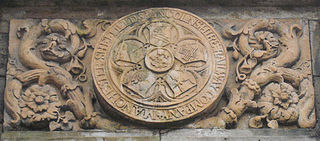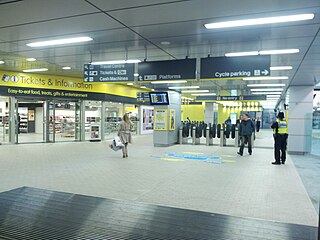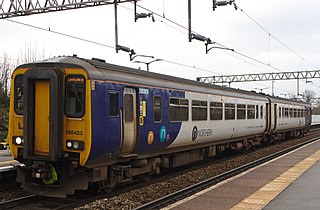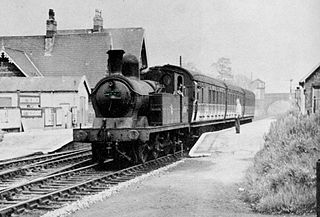
The West Coast Main Line (WCML) is one of the most important railway corridors in the United Kingdom, connecting the major cities of London and Glasgow with branches to Birmingham, Manchester, Liverpool and Edinburgh. It is one of the busiest mixed-traffic railway routes in Europe, carrying a mixture of intercity rail, regional rail, commuter rail and rail freight traffic. The core route of the WCML runs from London to Glasgow for 400 miles (644 km) and was opened from 1837 to 1881. With additional lines deviating to Northampton, Birmingham, Manchester, Liverpool and Edinburgh, this totals a route mileage of 700 miles (1,127 km). The Glasgow–Edinburgh via Carstairs line connects the WCML to Edinburgh. However, the main London–Edinburgh route is the East Coast Main Line. Several sections of the WCML form part of the suburban railway systems in London, Coventry, Birmingham, Manchester, Liverpool and Glasgow, with many more smaller commuter stations, as well as providing links to more rural towns.

Manchester Piccadilly is the main railway station of the city of Manchester, in the metropolitan county of Greater Manchester, England. Opened originally as Store Street in 1842, it was renamed Manchester London Road in 1847 and became Manchester Piccadilly in 1960. Located to the south-east of the city centre, it hosts long-distance intercity and cross-country services to national destinations including London, Birmingham, Nottingham, Glasgow, Edinburgh, Cardiff, Bristol, Exeter, Plymouth, Reading, Southampton and Bournemouth; regional services to destinations in Northern England including Liverpool, Leeds, Sheffield, Newcastle and York; and local commuter services around Greater Manchester. It is one of 19 major stations managed by Network Rail. The station has 14 platforms: 12 terminal and two through platforms. Piccadilly is also a major interchange with the Metrolink light rail system with two tram platforms in its undercroft.

Manchester Oxford Road railway station is a railway station in Manchester, England, at the junction of Whitworth Street West and Oxford Street. It opened in 1849 and was rebuilt in 1960. It is the third busiest of the four stations in Manchester city centre.

The Manchester, Sheffield and Lincolnshire Railway (MS&LR) was formed in 1847 when the Sheffield, Ashton-under-Lyne and Manchester Railway joined with authorised but unbuilt railway companies, forming a proposed network from Manchester to Grimsby. It pursued a policy of expanding its area of influence, especially in reaching west to Liverpool, which it ultimately did through the medium of the Cheshire Lines Committee network in joint partnership with the Great Northern Railway (GNR) and the Midland Railway.

The Cheshire Lines Committee (CLC) was formed in the 1860s and became the second-largest joint railway in Great Britain. The committee, which was often styled the Cheshire Lines Railway, operated 143 miles (230 km) of track in the then counties of Lancashire and Cheshire. The railway did not become part of the Big Four during the implementation of the 1923 grouping, surviving independently with its own management until the railways were nationalised at the beginning of 1948. The railway served Liverpool, Manchester, Stockport, Warrington, Widnes, Northwich, Winsford, Knutsford, Chester and Southport with connections to many other railways.

The Huddersfield line is the main railway line between the English cities of Leeds and Manchester, via Huddersfield. It is one of the busiest MetroTrain lines. The route travels south-south-west from Leeds through Dewsbury. After a short westward stretch through Mirfield, where it runs on the ex-L&YR section, it continues south-west through Huddersfield, using the Colne Valley to its headwaters. The long Standedge Tunnel, just after Marsden, crosses under the watershed; the majority of the run down to Manchester is in the Tame Valley. From Manchester, some services continue to Manchester Airport and others to Liverpool.

Liverpool Central railway station in Liverpool, England, forms a central hub of the Merseyrail network, being on both the Northern Line and the Wirral Line. The station is located underground on two levels, below the site of a former mainline terminus. It is the busiest station in Liverpool, though considerably smaller than Lime Street station, the mainline terminus, and the busiest station to operate solely on the Merseyrail network. The station is the busiest underground station outside London serving 40,000 people daily. The station in passengers per platform is the busiest underground railway station in the United Kingdom outside of London at 3,979,547 per platform per annum and coming tenth out of all stations outside the capital, underground or overground.

Hunts Cross railway station is a Grade II listed railway station in Hunt's Cross, Liverpool, England. It is situated on the southern branch of the City Line (Merseytravel)'s Liverpool to Manchester Line route, and is the southern terminus of Merseyrail's Northern Line.

There once were four direct railway routes between Liverpool and Manchester in the North West of England; only two remain, the two centre routes of the four. The most northerly and the most southerly of the four routes are no longer direct lines. Of the remaining two direct routes, the northern route of the two is fully electric, while the now southern route is a diesel-only line. The most northerly of the four has been split into two routes: the western section operated by Merseyrail electric trains and the eastern section by diesel trains, requiring passengers to change trains between the two cities. The fourth route, the most southerly of the four, has been largely abandoned east of Warrington; the remaining section caters mainly for freight trains.

Lichfield Trent Valley is one of two railway stations that serve the city of Lichfield in Staffordshire, England; the other being Lichfield City in the city centre. It is a split-level station: low level platforms serve the Trent Valley section of the West Coast Main Line, with a single high level platform being the northern terminus of the Cross-City Line.

Chinley railway station serves the rural village of Chinley in Derbyshire, England. The station is 17+1⁄2 miles (28.2 km) south east of Manchester Piccadilly, on the Hope Valley Line from Sheffield to Manchester. It is unstaffed and is managed by Northern Trains.

Warrington Central is one of three main railway stations serving the town of Warrington in Cheshire, England. It is located on the southern route of the Liverpool to Manchester Lines, the former Cheshire Lines Committee route between Liverpool and Manchester; the station is situated approximately halfway between the two cities.
Allerton railway station was a railway station on the City Line of the Merseyrail network, located in the suburbs of Liverpool, England.

Garston railway station was a railway station in the Garston district of Liverpool, England. The station was located on the Northern Line of the Merseyrail suburban rail network. The station was closed in 2006 when it was replaced by Liverpool South Parkway, which is a combined bus and rail interchange. The proximity of the stations was so close the platforms of South Parkway nearly merged onto the Garston station's platforms.

Liverpool South Parkway station is a railway station and bus interchange in the Garston district of Liverpool, England. It serves, via a bus link, Liverpool John Lennon Airport in the neighbouring suburb of Speke, as well as providing an interchange between main line services and the Merseyrail rapid transit/commuter rail network. Opened in 2006 on the site of the former Allerton railway station, it also replaced the nearby Garston station.
The North Liverpool Extension Line was a railway line in Liverpool, England in operation between 1879 and 1972. It was at one stage intended to become the eastern section of the Merseyrail Outer Loop, an orbital line circling the city.

The City Line is the brand name used by Merseytravel on suburban rail services in the Liverpool City Region starting eastwards from the mainline platforms of Liverpool Lime Street railway station.

Hunts Cross chord is a section of railway track in Liverpool that was built by the Cheshire Lines Committee (CLC) to connect the LNWR's Edge Hill to Ditton Junction line with the CLC's Liverpool to Manchester Line. Mainline services between Manchester and Liverpool were diverted to Lime Street from their previous terminus at Central High Level over this connection from 5 September 1966.

Northenden railway station in Sharston, Manchester, England, was built by the Stockport, Timperley and Altrincham Junction Railway (ST&AJ) and opened for passenger and goods traffic on 1 February 1866.
Urban andsuburban rail plays a key role in public transport in many of the major cities of the United Kingdom. Urban rail refers to the train service between city centres and suburbs or nearby towns that acts as a main mode of transport for travellers on a daily basis. They consist of several railway lines connecting city centre stations of major cities to suburbs and surrounding towns.

















